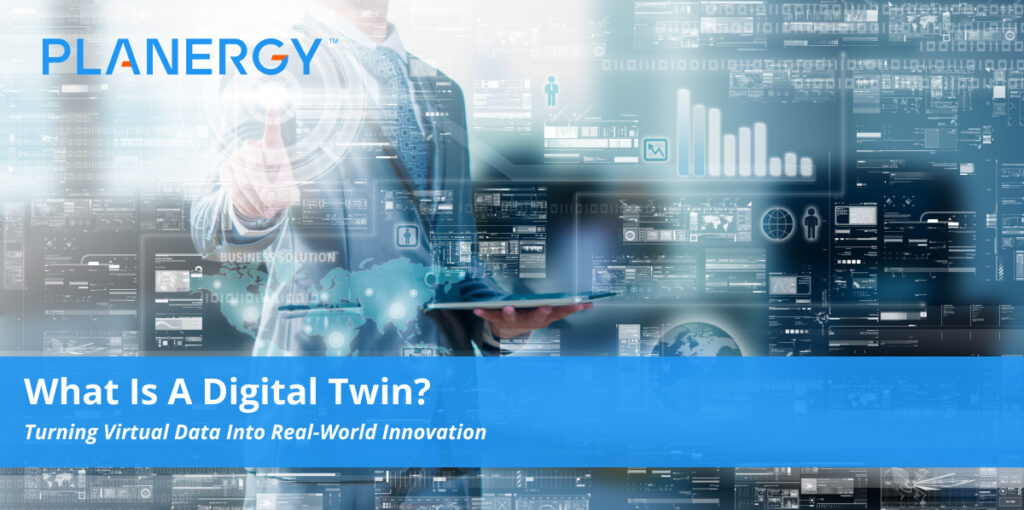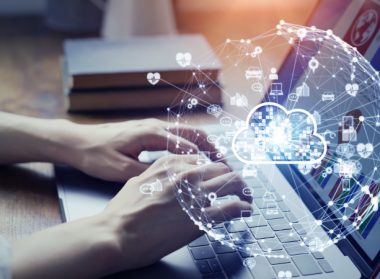Digital transformation touches on so many aspects of the modern workplace that it can be tough to keep up with the latest innovations.
One of the most talked-about examples, however, may have caught your attention: digital twins.
Don’t let visions of The Parent Trap keep you away; this virtual technology is poised to change the way businesses look at everything from product design to procurement to continuous process improvement.
Even if you’re not a Gemini, your business can benefit from the powerful potential offered by digital doppelgangers.
To harness that power, however, you first need to understand their origin, limitations, and meaning for today’s business world—both now, and in the years ahead.
Digital Twins Mirror Reality
Back in the late 1980s, Hollywood paired Danny DeVito and Arnold Schwarzenegger in Twins, stretching both narrative credibility and the minimum acceptable definition of the word “twin.”
But unlike the mismatched duo from the film, digital twins provide an exact virtualized copy of an Internet-connected object or process.
Thanks to code and, for physical objects, detailed sensors, anyone interacting with the digital twin has (nearly) real-time information on the status and location of the object or process being copied.
This gives the person interacting with the digital twin to apply real-world information to the virtual model.
They can run simulations, examine directly the effects of both simulated and real-world changes, and, in turn, use the insights gleaned to refine predictive analytics and adjust their forecasting, processes, and decision making with regard to the objects and processes in the real world.
What began as the solution to a complex engineering problem has evolved into an unprecedented opportunity to transform virtual data management into real-world efficiency, improvement, and innovation.
The Birth of a New Paradigm
Digital twin technology was initially deployed by the National Air & Space Administration (NASA), in conjunction with the Defense Advanced Research Projects Agency (DARPA), during the development of the Apollo Program in the 1960s.
Because they couldn’t simply hop on the nearest passing UFO and test their equipment in the rigors of space, the scientists at NASA created digital twins of the craft and subjected them to simulation after simulation in order to identify safety and performance issues.
They used what they learned from the virtual models to make performance-enhancing, efficiency-improving, life-saving changes to the physical spacecraft they were sending to the stars.
These first systems weren’t quite real-time connections to the objects soaring through the void millions of miles away.
Instead, they were advanced virtual replicas that gave NASA scientists a window into how they could handle minor problems and, in the case of Apollo 13, major disasters without being able to directly manipulate and monitor events.
Fast forward to the present, with both Big Data and the Internet of Things (IOT) in ascendency.
With everything from smart dog collars to shipping containers to video game figurines feeding a constant stream of information to the global datasphere, it becomes clear how valuable all this data can be if properly collected, analyzed, and applied.
NASA, naturally, continues to use digital twinning as a core component of its own current and next-gen initiatives, but advances in the process they pioneered have opened the door to radical improvements for organizations of all stripes.
What began as the solution to a complex engineering problem has evolved into an unprecedented opportunity to transform virtual data management into real-world efficiency, improvement, and innovation.
Business Benefits of Digital Twins
Connecting physical products to virtual representations is at the core of the industrial Internet of Things.
Sensor data from the IOT gives engineers, product designers, and logistics specialists crucial information about how a product is being used or the conditions its experiencing.
If, for example, a jet engine is underperforming in inclement weather due to a design flaw, recreating the physical object in a virtual environment can allow for crucial design updates and simulated testing to ensure the next flight is a safer one.
It would be foolish, however, to narrow the applications of digital twins to advanced manufacturing challenges.
A virtual model can work just as well for business processes as manufacturing processes, and create value across your entire organization through:
- Immediate product visualization and usage data across all stages of a product’s creation and use, simplifying product lifecycle management
- Real-time digital representations of processes, e.g., a procure-to-pay (P2P) workflow, highlighting potential bottlenecks, breakpoints, and delivery or customer experience issues
- Sharp reductions in formerly analogue, paper-driven processes and their associated time and resource consumption
- Immediate access to simulation-ready data for refinement of predictive analytics and changes to products, systems, or workflows
- Easier repairs and updates for equipment in distant or dangerous locations
- Preservation and improvement of competitive advantage over companies without the insights available through digital twinning
- Improved customer and stakeholder investment through continuous, real-time monitoring and improvement of both products and processes, as well as the potential use of augmented reality to facilitate engagement and information sharing
- Reduced need for working capital through optimization and smarter decision-making
- Simplified compliance evaluation and execution
- Improved asset management through protection for high-value digital and physical assets; the digital twin can be used for experimental refinements via simulation while the original asset remains untouched
- Greatly enhancing business outcomes through enhanced integration with enterprise resource planning (ERP), customer resource management (CRM), and procurement solutions. Such integration creates a cohesive, centralized, and data-driven information and process management suite for businesses of all sizes.
- Integration of use cases and historical data with current and future data streams to reduce errors and simplify processes and production
Much of the promise present in digital twin technology is due to the growing sophistication of both automation and artificial intelligence (including an analytical subset called machine learning, focused on data-driven decision making).
Automation streamlines and simplifies for easier optimization, while artificial intelligence enables cross-connection between disparate software sources in the digital world and far-flung facilities, objects, and consumers in the physical world.
Growing Pains for Digital Twinning
As the amount of information being processed increases, so does the need for a centralized solution to facilitate effective data management.
Artificial intelligence, automation, and cross-platform integration address this need, but hurdles to widespread acceptance and integration remain.
Firstly, by the lights of many companies and consumers, cross-connections and continuous data flows are useful only if they are also secure and protected from both intentional and inadvertent misuse.
Integrating digital twins into all aspects of the modern workflow may require new standards for security and stability, especially as the complexity of the connections and the expectations placed upon the AI grow in both number and scope.
Secondly, while machine learning and the data it provides can support improved decision-making through real-time data and predictive analytics, the human beings outside the IOT box still need the skills, training, and foresight to make those smarter decisions.
Leaving the actual decision making in the hands of the AI remains chancey at best and potentially disastrous at worst (cue horror stories of rogue delivery drones taking a self-prescribed “shortcut” through a picture window to save on fuel).
While there’s no real concern (fingers crossed) about a potential Terminator-style machine uprising, the human element is still absolutely critical to success.
Finally, with or without AI, digital twins present a significant, potentially culture-shifting change for most companies.
This is particularly important if they’ve yet to embrace more basic analytic enhancements, such as digital supply chain management or digital conversion of pen-and-paper workflows.
For these businesses, gaining buy-in on all levels may require extensive and repeated education initiatives for staff, customers, and suppliers—both to demonstrate value and to achieve the cultural transformation necessary to step into the future without fear of losing the success of the past.
The Best of Both Worlds
Once the province of science fiction, a tactile and useful connection between the virtual and physical worlds is now poised to become a “must-have” for successful companies around the globe.
Understanding the power of digital twins, and embracing the technology that unleashes their potential, is the first step toward a whole new world of innovation and optimization for your business.




